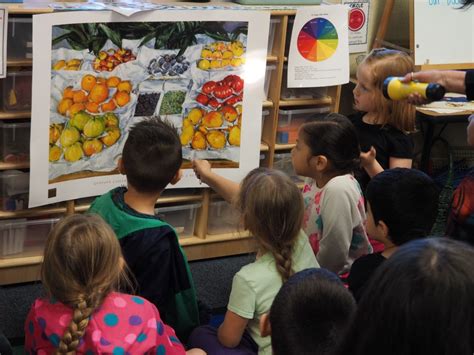Introduction

Drawings play a pivotal role in the teaching profession, serving as powerful tools to enhance student engagement, promote understanding, and foster creativity. From simple sketches to intricate diagrams, drawings offer a unique way to convey information, stimulate discussion, and make learning more enjoyable. This comprehensive guide explores the multifaceted benefits of drawings for teachers and provides practical tips to incorporate them effectively into the classroom.
Benefits of Drawings in Education
Enhanced Student Engagement
Studies have consistently shown that drawings engage students and increase their attention span. The visual nature of drawings captivates their interest, making it easier for them to focus on the content being taught. By adding illustrations to lessons, teachers can break down complex concepts into digestible chunks, making them more accessible and engaging.
Improved Understanding
Drawings provide a powerful medium for students to process and retain information. Visual representations of concepts help students connect new knowledge to existing understanding, enabling them to grasp complex ideas more easily. Moreover, drawings allow students to organize and structure their thoughts, facilitating deeper insights and a better grasp of the subject matter.
Fostered Creativity
Drawings nurture students’ creativity and imagination. By encouraging students to express themselves through visual means, they develop their problem-solving abilities, spatial reasoning, and artistic skills. Drawings provide a safe and non-judgmental space for students to experiment with different ideas and perspectives, fostering their individuality and originality.
Incorporating Drawings into the Classroom
Types of Drawings
Teachers can utilize various types of drawings for different purposes:
- Diagrams: Clear and concise representations of concepts, processes, or relationships.
- Flowcharts: Step-by-step visual breakdowns of processes or events.
- Mind Maps: Graphical representations of ideas and their connections, facilitating brainstorming and organization.
- Sketches: Quick and simple drawings that capture key concepts or ideas.
- Freehand Drawings: Open-ended and expressive drawings that encourage creativity and imagination.
Integration Strategies
Effectively incorporating drawings into the classroom requires thoughtful planning and execution:
- Pre-Lesson Preparation: Prepare drawings in advance to support upcoming lessons. Use clear and visually appealing imagery to enhance understanding.
- Interactive Activities: Engage students in drawing activities as part of the lesson. Allow them to draw diagrams, mind maps, or sketches to reinforce their understanding.
- Collaborative Projects: Encourage students to work together on drawings, fostering teamwork and shared learning.
- Assessment Tools: Use drawings to assess student learning. Drawings can reveal their understanding of concepts, creativity, and problem-solving skills.
Common Mistakes to Avoid
While using drawings in the classroom can be highly beneficial, it’s essential to avoid common mistakes:
- Overuse: Avoid overwhelming students with excessive drawings. Use them strategically to enhance learning without becoming overwhelming.
- Insufficient Preparation: Poorly prepared drawings can hinder understanding. Ensure drawings are clear, accurate, and visually engaging.
- Lack of Relevance: Only include drawings that are directly relevant to the lesson. Avoid adding unnecessary or distracting visuals.
- Student Dependence: Encourage students to use drawings as learning tools rather than crutches. Guide them to develop their own drawing skills and understanding.
Creative Applications of Drawings in Education
Beyond traditional uses, teachers can harness drawings’ power in innovative ways to enhance the learning experience:
- Interactive Whiteboard Drawings: Utilize interactive whiteboards to create dynamic and engaging drawings that students can manipulate and interact with.
- Virtual Drawing Walls: Create virtual spaces where students can share and collaborate on drawings, fostering remote learning and peer-to-peer learning.
- Drawing Apps and Software: Leverage technology to empower students with drawing apps and software, expanding their drawing capabilities and creativity.
- Student-Generated Illustrations: Encourage students to create their own drawings to illustrate their understanding of concepts, promoting ownership and self-expression.
A Comprehensive Guide to Drawings for Teachers
To further explore the topic, consider the following resources:
| Title | Description |
|---|---|
| The Power of Drawings in Education | An in-depth analysis of the benefits and uses of drawings in the classroom. |
| Strategies for Incorporating Drawings into Lessons | Practical tips and techniques for effectively using drawings in various subjects. |
| Common Pitfalls and Solutions in Using Drawings | Guidance on avoiding common mistakes when utilizing drawings for educational purposes. |
| Innovative Applications of Drawings in the Classroom | A collection of creative ways to harness the power of drawings for enhanced learning. |
Conclusion
Drawings are invaluable tools for teachers, empowering them to enhance student engagement, promote understanding, and foster creativity. By strategically incorporating drawings into the classroom, teachers can create a more dynamic and engaging learning environment that caters to students’ diverse learning styles. Embrace the power of drawings and unlock a world of possibilities for your students.
